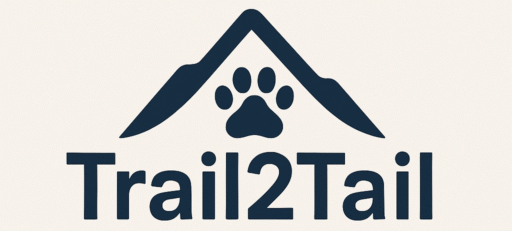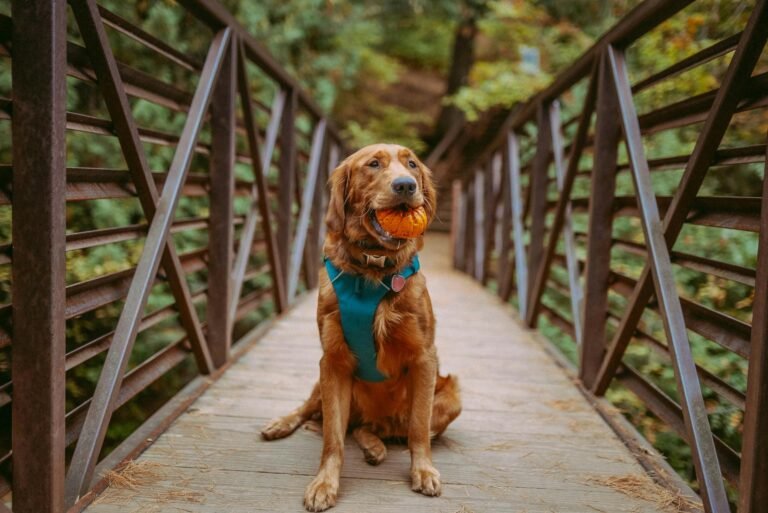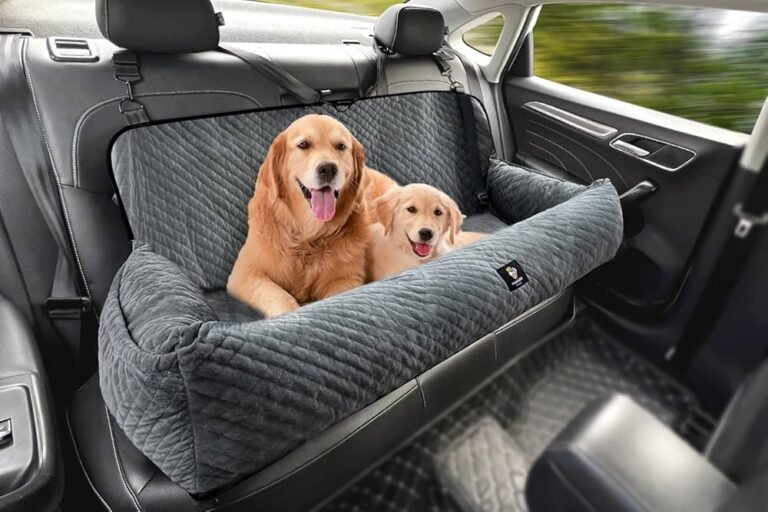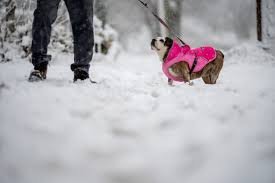It’s necessary to choose the right outdoor harness for your dog to ensure their comfort and safety during your adventures together. However, many dog owners overlook key aspects that can lead to frustration or even compromise your pet’s well-being. In this post, we will highlight five common mistakes to avoid when selecting an outdoor harness, helping you make a more informed decision for your furry companion.
Key Takeaways:
- Size matters; ensure the harness fits snugly without being too tight or too loose.
- Material quality is important; choose durable, weather-resistant materials for outdoor use.
- Consider the harness design; select one that allows for freedom of movement and is easy to put on and take off.
Common Overlooked Size Factors
When opting for an outdoor harness, many owners overlook crucial size factors that can impact fit and functionality. Each dog has a unique body shape, and improper sizing can lead to discomfort or even injury. Take the time to measure your dog accurately and consider the following:
- Neck circumference
- Chest girth
- Length from neck to tail
- Adjustability of the harness
Assume that a specific size label fits all; it’s important to consider these individual measurements for the best fit.
Misjudging Weight vs. Size
Weight alone doesn’t determine the right harness size. Dogs of the same weight can differ vastly in body shape and proportions. For instance, a muscular breed like a Bulldog might need a different style than a slender breed like a Greyhound, despite weighing similar amounts. Always rely on specific measurements over general weight categories.
Fitting for Growth
Choosing a harness that allows room for growth is vital, especially for puppies or young dogs. As your pet grows, their body shape and size will change, requiring a fit that accommodates these alterations without compromising safety and comfort.
Selecting a harness that is adjustable can be beneficial for this reason. Look for designs that allow you to modify strap lengths or offer extensions. For large breeds, consider a harness that can transition with your dog from puppyhood into adulthood. This can save you money and ensure that the harness remains comfortable and functional throughout their growth phases. Evaluate the fit every few months to make necessary adjustments and keep your dog secure during outdoor activities.
Material Considerations
When deciding on an outdoor harness, the material it’s made from plays a pivotal role in both performance and longevity. Opt for high-quality fabrics such as nylon or polyester, which offer a good balance of strength and lightweight design. Avoid cheap, flimsy materials that will wear out quickly or fail in critical situations. Pay attention to stitching and overall craftsmanship; well-constructed harnesses made from durable materials outperform those that cut corners in production.
Durability vs. Comfort
Finding the right balance between durability and comfort is imperative for outdoor harnesses. While rugged materials increase longevity, they can sometimes compromise comfort. Look for features like padded straps or ergonomic designs that enhance your dog’s comfort without sacrificing the harness’s structural integrity. Consider testing the harness on your dog to ensure it allows freedom of movement while remaining resilient against everyday wear and tear.
Weather Resistance
Weather-resistant materials are vital for outdoor harnesses as they protect your dog from the elements. Fabrics treated with water-repellent coatings or those made from moisture-wicking materials keep your dog dry during rain or snow. Additionally, whether you’re hiking through muddy trails or navigating puddles, a harness that resists absorption prevents your dog from getting weighed down.
Look for harnesses that feature waterproof or water-resistant characteristics, as they provide an added layer of protection during unexpected downpours. Consider materials like ripstop nylon, which not only resists water but is also highly durable against abrasions and tears. Reflective elements or bright colors are also advantageous for low visibility conditions, ensuring your dog remains safe while enjoying outdoor adventures.
Safety Features
When deciding on an outdoor harness, pay close attention to safety features that can protect your dog during excursions. Many harnesses come equipped with reflective elements, secure fastening mechanisms, and durable materials designed to withstand the elements. Prioritizing these aspects ensures that your dog remains visible and secure while exploring the great outdoors.
Reflective Elements
Reflective elements are crucial for enhancing visibility during low-light conditions. Nighttime walks or early morning outings can expose your dog to potential hazards, making it vital to choose a harness with reflective strips or stitching. These features will help to keep your dog visible to pedestrians and motorists, significantly reducing the risk of accidents.
Secure Fastening Mechanisms
Secure fastening mechanisms are integral to your dog’s safety while wearing a harness. A quality harness should have effective closures, such as buckles or clips, that prevent accidental release. Look for designs that use strong, reliable hardware to ensure the harness remains securely fastened, no matter how active your dog is during outdoor activities.
When evaluating secure fastening mechanisms, consider options like quick-release buckles that allow easy adjustments while maintaining a locked position. Double-stitched seams can provide added security, ensuring it doesn’t easily come apart under stress. Many top-tier harnesses feature adjustable straps that cater to your dog’s unique body shape, providing a snug fit without sacrificing comfort. By scrutinizing these fastening systems, you can confidently choose a harness that keeps your dog safe on every adventure.
Purpose-Specific Designs
Choosing an outdoor harness should align with your dog’s specific activities. Harnesses designed for hiking, running, or fishing are tailored for those environments, providing features like extra padding for comfort, reflective materials for visibility, or secure compartments for imperatives. A harness that meets the demands of your chosen outdoor activity will enhance both safety and enjoyment for you and your dog.
Active Dog Needs
If your dog is highly active, look for harnesses that allow for a full range of motion. Features such as adjustable straps, lightweight materials, and breathable fabrics are imperative for keeping your dog comfortable during intense activities. A well-suited harness can help prevent chafing and ensure that your dog stays focused on the adventure ahead.
Breeds with Special Considerations
Some breeds have unique needs that must be addressed when selecting an outdoor harness. Short-snouted dogs like Bulldogs and Pugs may require specially designed harnesses to prevent breathing difficulties. Alternatively, larger breeds might need reinforced structures for safety and support. By choosing a harness that considers your dog’s physical traits, you’ll enhance their outdoor experience without compromising comfort or safety.
Additionally, breeds prone to back issues, such as Dachshunds, should wear harnesses that distribute pressure evenly to avoid aggravating their spines. Conversely, dogs with thick necks, like Rottweilers, benefit from harnesses that prevent slipping. Always consider your dog’s specific characteristics to ensure the best fit and performance for outdoor activities.
Ignoring Training Style
When choosing an outdoor harness, your training style is an necessary factor that can influence your dog’s behavior and comfort. Certain harnesses may work better for specific training methods, so consider how your dog responds to leash guidance versus free-roaming strategies. You can check out A List of the Pros and Cons of Harnesses for Dogs for insights. A harness that complements your training approach can enhance the walking experience significantly.
Control During Walks
A harness that provides good control during walks is necessary for keeping your dog safe and manageable. Opt for designs that distribute pressure evenly across their body, reducing strain and preventing pulling. This can help deter sudden lunges toward distractions and allow you to guide your dog effectively without causing discomfort.
Training Compatibility
Your harness choice should align with your fundamental training techniques to maximize effectiveness. For example, if you use positive reinforcement to encourage loose-leash walking, a front-clip harness can discourage pulling by redirecting your dog towards you when they pull ahead. This compatibility can streamline your training sessions and create a more harmonious walking routine.
In fact, support for training compatibility should also include consideration for how your dog learns best. If your dog is a quick learner and responds well to immediate feedback, opting for an adjustable harness fits better, allowing you to quickly adapt and modify as needed. A well-matched harness can not only support your training style but also build trust between you and your dog, making walks more enjoyable and productive.
Underestimating Dog Preference
When dicking out an outdoor harness, many dog owners overlook their dog’s individual preferences. Just like people, dogs have unique tastes in how they wear gear. Your dog may have a preference for a particular style or material that keeps them comfortable while exploring. Pay attention to their reactions during fittings: happy tail wags usually mean you’re on the right track, while signs of discomfort, such as whining or trying to escape, suggest a mismatch. Prioritizing your dog’s preferences can significantly enhance their outdoor experience.
Assessing Your Dog’s Comfort
Comfort is paramount when choosing an outdoor harness. You’ll want to check for pressure points, chafing, or restricted movement. Observe how your dog behaves when the harness is on; signs of discomfort can manifest in various ways, including restlessness or refusal to walk. Look for harnesses with padded straps and adjustable fittings, which ensure a snug yet comfortable fit. Take your time to ensure that the harness does not cause any irritation, as this can jeopardize your outings and your dog’s enjoyment.
Trial and Error for Fit
Finding the right fit may require some trial and error. Start by measuring your dog’s girth and neck to choose the correct size, but don’t stop there. Once you have a harness, observe how it fits in real-time. Walk your dog in the harness for a few minutes; it’s common for a harness to feel different during activity than while stationary. This is when you can assess whether adjustments are needed or if a different style might serve your dog better. A fitting that feels right at first might not be suitable for longer walks.
Keep in mind that not all harnesses work for every dog, even those in the same size category. A harness may look great on your dog but could restrict their movement during a jog or hike. Experiment with varying styles, like front-clip versus back-clip options, to determine what your dog moves best in. For example, front-clip harnesses can help with pulling while providing better control. Always observe how your dog reacts to each harness to guide you toward the best overall fit and comfort for outdoor adventures.
Summing up
Now that you are aware of the five common mistakes dog owners make when selecting an outdoor harness, it’s necessary to reflect on your choices to ensure the best fit for your dog’s needs. Prioritize comfort, size, purpose, material quality, and adjustability to enhance your outdoor adventures together. By avoiding these pitfalls, you can not only improve your dog’s safety but also make your outings more enjoyable. Make informed decisions that cater to your dog’s specific requirements for a successful harness experience.
FAQ
Q: What size harness should I choose for my dog?
A: Selecting the correct size harness is imperative. Measure your dog’s chest and neck girth and consult the sizing chart of the harness brand. An ill-fitting harness can cause discomfort and affect your dog’s mobility.
Q: How do I know if the harness is durable enough for outdoor activities?
A: Look for harnesses made from high-quality, weather-resistant materials. Check for reinforced stitching and strong buckles. Reviews and recommendations from other dog owners can also provide insight into durability.
Q: Is it important to consider the type of outdoor activities when choosing a harness?
A: Yes, different activities require different harness features. For hiking or jogging, opt for a harness that offers support and is lightweight. For everyday walks or training, a simple, adjustable harness may suffice.






